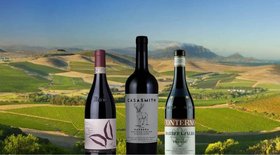Barbaresco Wines (Best Wines, Prices, Easiest Way to Buy)
What is Barbaresco? And, which are the best Barbaresco wines you should buy?
What kind of wine is Barbaresco?
Barbaresco is an Italian red wine made from the Nebbiolo grape in the picturesque Piedmont region of Italy. It packs layers of acidity, fruit, and tannins greeting the nose with aromas of cherries, roses, and dark spices.
You might have heard it compared to Barolo wine. Despite their similarities, they’re quite different. Barbaresco is just as good - and sometimes even better than Barolo! (You’ll see why in a bit.)
In this article, we tell you everything about Barbaresco wines, their history, and some of the best winemakers in the region. We’ve also handpicked some of the best Barbaresco wines that you should have in your wine cellar.
Further reading
- Want to know all about expressive Pinot Noir, Beaujolais Nouveau or exquisite Champagnes like Dom Perignon?
- Also, explore the best ways to design the perfect Wine Cellar for your wine collection!
A Brief History of Barbaresco Winemaking

The town of Barbaresco in Piedmont or Piemonte came into prominence after the headmaster of a local school in Alba - Domizio Cavazza - founded the Cantina Sociale di Barbaresco cooperative in 1894.
Before 1894, Nebbiolo grapes from this Italian wine region were only supplied to makers of Barolo wine. Cavazza formed a team of nine growers, and they cultivated Nebbiolo grapes in their vineyards.
He understood the differences between the Nebbiolo grape grown in Barolo and Barbaresco and started to mention the word “Barbaresco” on the wine label.
Eventually, the wines saw a steep decline in consumption with World War I and the premature death of Cavazza in 1915. The Cantine Social was closed in the 1930s.
However, the production of Barbarescos was revived in the late 1950s thanks to newer dynamic winemakers like Bruno Giacosa and Angelo Gaja. Nineteen small growers gathered together and founded the Produttori del Barbaresco, a community that now owns a 250-acre Nebbiolo-growing area to make Barbaresco wines.
Suggested reading:
Meanwhile, if you’re keen to know about French wines, check out this informative article.
Also, here are some of the best wine brands from around the world.
Wine Regions where Barbaresco Wines are Produced (Including Crus and Producers)
Barbaresco wines are made in four communes in the Piedmont region - Barbaresco, Neive, Treiso, and San Rocco Seno d’Elvio.
This area comprises 65 vineyard sites or MGAs (Menzioni Geografiche Aggiuntive) - this is collectively referred to as the Barbaresco Zone.
Since 2007, all 65 Barbaresco crus have been recognized on the wine labels.
Let’s see what the four communes and the crus are.
1. Barbaresco

45% of Barbaresco wine production is done in the vineyards around the town of Barbaresco. Wines from this region are light-bodied, light-hued, aromatic, and structured.
Crus in the Barbaresco commune include Montestefano, Martinenga, Pora, and Rabajà.
In excellent vintage years, nine single vineyard Barbarescos are produced from these premium sites in the Barbaresco village.
Some of the best producers here are Produttori di Barbaresco and Albino Rocca among others.
2. Neive
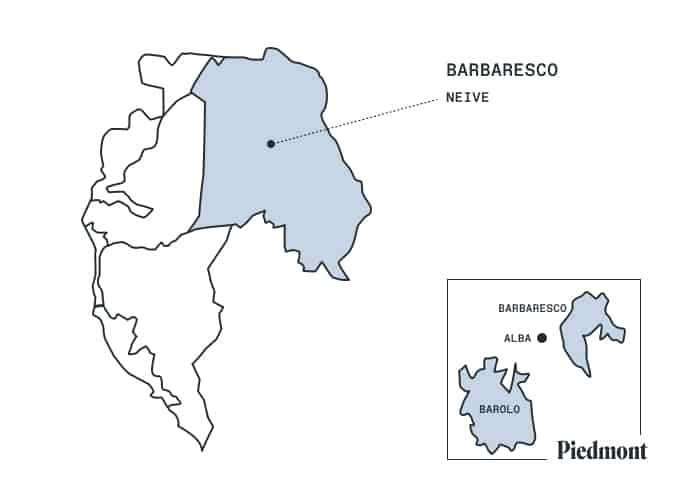
To the east of Barbaresco lies Neive, where the top three grape varieties are Barbera, Dolcetto and Moscato. The Nebbiolo follows in the fourth position, but it produces some of the most tannic and expressive Barbaresco wines.
The best crus in Neive include Gallina and Santo Stefano. Cantina del Glicine and Sottimano are among the best producers here.
3. Treiso

To the south of Barbaresco, Treiso boasts hillside vineyards 600 feet above sea level that account for 20% of Barbaresco wine production. The wines produced here are light-bodied and are much loved for their finesse.
Crus in the Treiso commune include Bricco di Treiso, Rombone, and Bernardot. Some of the best producers here are Ca’ del Bajo, Fiorenzo Nada, and Pio Cesare.
4. San Rocco Seno d’Elvio
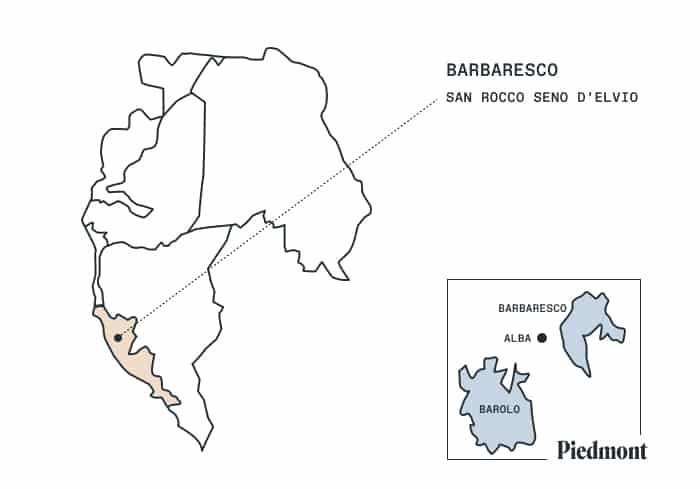
San Rocco Seno d Elvio is a tiny hamlet in Alba with steep slopes and cool temperatures. The wineries here produce Barbarescos with intense floral aroma and finesse.
They’re accessible to drink much earlier than other Barbarescos, but they’re less complex.
Note that some of these producers also make Langhe Nebbiolo wines using grapes sourced from the less desirable slopes or areas outside the Barbaresco and Barolo zones.
You may also find great value Langhe Nebbiolo wines (like the Ettore Germano Langhe Nebbiolo) in good vintage years. They taste great but aren’t as tannic as their famous counterparts.
Terroir (environmental factors) of the Barbaresco Zone
The soil in this area is made up of calcareous marl dating back to the Tortonian age (11.6 million to 7 million years ago.) Calcareous marl is a lime-rich clay-based soil.
This lime content in the soil adds a higher pH (higher alkalinity), making the vine produce Nebbiolo grapes with a lower pH (higher acidity!) And, acidity is an essential component in wines that age well.
The region has a unique microclimate that makes its Nebbiolo grapes fresh and balanced even in the hottest vintages.
Natural vineyard management in the Barbaresco zone
The new generation of winemakers in Barbaresco has been using natural farming methods to produce high-quality vines. Many of them stopped the use of chemicals and industrial fertilizers since the early 2010s.
All You Need to Know About Barbaresco Wines
Let’s dive further into the wine styles, aging potential, and how they’re different from Barolo and Brunello wines.

Barbaresco wine styles
The wines made in Treiso have high acidity and floral scents, while those made in Neive and Barbaresco are complex and more structured.
In general, a typical Barbaresco offers bouquets of roses and violets with flavor notes of truffles, cherry, fennel and licorice. As it ages, it’ll develop earthy, smoky notes and flavors like tar and leather.
How long can you age Barbaresco?
According to DOCG regulations, a standard Barbaresco needs to age for two years - one in oak. A Riserva has to age for four years, with two in oak.
To get the best out of a Barbaresco wine, you need to let it age at least 5-10 years after vintage before drinking.
Now: Barolo and Barbaresco wines are made from Nebbiolo grapes in vineyards just around 10 miles apart. How are they different from each other?
You may also have heard the three Bs - Barolo, Barbaresco, and Brunello, being used interchangeably.
So you may wonder:
How is Barbaresco different from Barolo and Brunello?
Here’s a quick comparison.
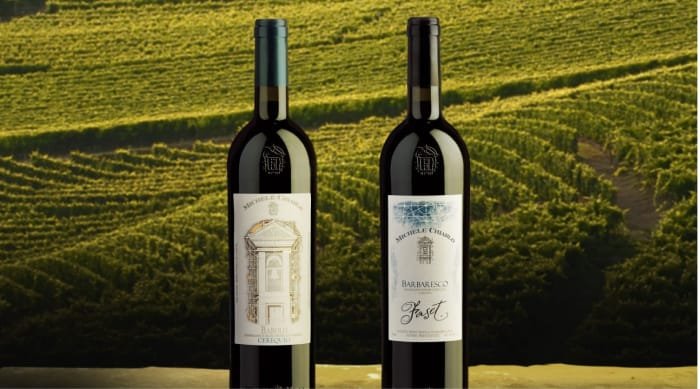
Barbaresco vs. Barolo
Barolo is made in the communes of La Morra, Montforte d’Alba, Castiglione Falletto, Serralunga d’Alba, and Barolo - just across the hill from Barbaresco. However, the two wines differ in taste due to:
- Different history: Winemaking in Barolo is close to 50 years older than in Barbaresco.
- Earlier ripening of Nebbiolo grapes: As Barbaresco lies south of the Tanaro river, the cool sea breeze that travels up the valley ripen grapes more quickly than in Barolo. So the fermentation happens earlier with a shorter maceration time. The tannins ripen early and produce wines that are ready to drink at a young age.
- Smaller production: The average Barbaresco vineyard is much smaller than a vineyard in Barolo. So, naturally, the production quantities are lower in Barbaresco.
- Storage
- Taste: Barbaresco has lower acidity than a Barolo, and is lighter and riper in style.
Barbaresco vs. Brunello
Here’s how a Brunello or Brunello di Montalcino differs from Barbaresco.
- Region: Brunello or Brunello di Montalcino is from Tuscany in central Italy.
- Grapes: It is made from 100% Sangiovese grapes. It is the only Tuscan wine made with just one grape.
- Wine style: Apart from the floral notes and forest flavors like Nebbiolo wines, Brunello wines offer a savory quality and have moderate tannins.
- Appellation regulations: Brunello wines need to be aged for three years in botti (Slavonian oak casks.) Riserva wines must age an additional year.
- Aging potential: With a higher tannin content, they’re more age-worthy than typical Barbarescos.
Best Years for Barbaresco and Barolo wines
Always note the vintage when buying Nebbiolo wines from Barbaresco and Barolo.
The best years were 2016, 2015, 2013, 2012, 2011, 2010, 2006, 2005, and 2004.
For example, the 2016 wines can be cellared for over 10 years. The 2013, 2010, and 2006 wines are highly acidic and aromatic, and age well.
So, which are the best bottles you should buy?
Best Barbaresco Wines You Should Consider Buying (Including Prices and Tasting Notes)
Here are some of the best bottles which may be worth a place in your cellar or wine rack.
1. 2015 Gaja Barbaresco DOCG
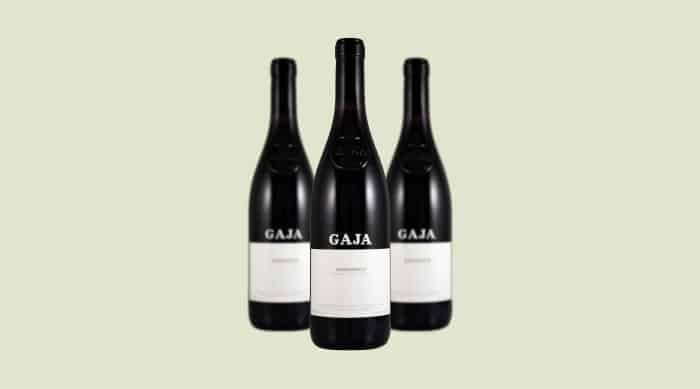
The 2015 Gaja Barbaresco DOCG is the flagship wine of the Gaja winery.
Nebbiolo grapes for the 2015 Gaja are sourced from 14 vineyards of the Gaja family. This luminous, ruby red wine is dense with super-fine tannins, and rich notes of ripe peach, rhubarb, and raspberry.
You can enjoy it best in 2022, and it can be cellared for up to 25 years.
Price of 2015 Gaja Barbaresco DOCG: $200+
Fun facts about the Gaja winery:
- Angelo Gaja (the grandson of winery founder Giovanni Gaja) was the first to introduce single vineyard wines in Barbaresco. He released single vineyard bottlings of their Sorì San Lorenzo wine in 1967.
- He was the first in the region to use a Bordeaux-style oak barrique (225-liter barrel) for malolactic fermentation of wine.
- He pioneered the shorter carbonic maceration method for his wines.
2. 2015 Rabaja Riserva Produttori del Barbaresco
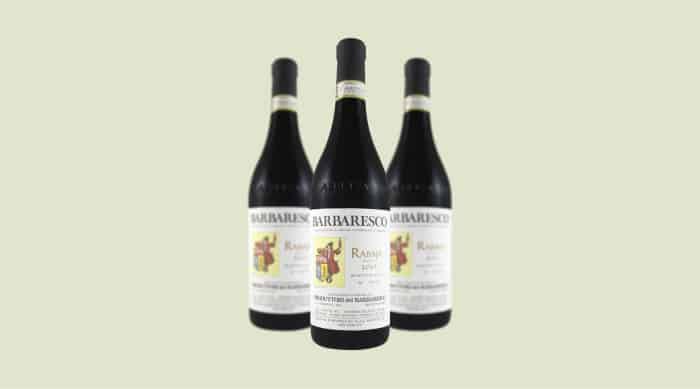
The Produttori del Barbaresco winery makes this full-bodied, red wine in the Rabaja vineyard in the Langhe hills.
The Rabaja Riserva Produttori del Barbaresco has a solid tannic structure with a fruity core. It gives off notes of ripe red fruit, chocolate, smoke, and spices. You’ll also find hints of rose petal, minerals, menthol, and tar in this Produttori del Barbaresco wine. Drink it until 2040.
Price of 2015 Rabaja Riserva Produttori del Barbaresco: $145+Fun facts about the Produttori del Barbaresco winery:
- The first three vintages were produced and stored in the basement of a local church - before the winery opened in 1961.
- In wine critic Robert Parker’s words, this winery “continues to set some of the for any cooperative in the world.”
- 550,000 bottles are produced in a year. In good vintage years, the winery makes Barbaresco (50%), single-vineyard Barbaresco (30%) and Nebbiolo Langhe (20%).
3. 2011 Falletto di Bruno Giacosa Asili Riserva, Barbaresco DOCG
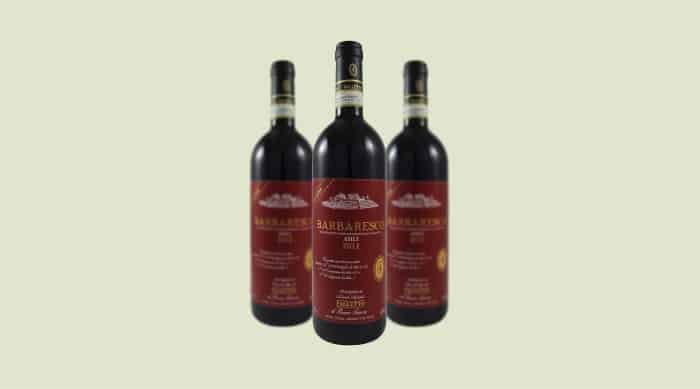
This is a full-bodied, refined wine made in the Bruno Giacosa winery, also known for its famous single vineyard wine, Santo Stefano.
This great wine offers violet, orange peel, and red fruit notes, with silky tannins on the palate and a long, luxurious finish.
Price of 2011 Falletto di Bruno Giacosa Asili Riserva, Barbaresco DOCG: $150+
Fun facts about the Bruno Giacosa winery:
- The legendary winemaker Bruno Giacosa joined his family business at the age of 15.
- He crafted prestigious single-vineyard Barbarescos and Barolos for the next 80 years.
- In fact, wine was produced by Bruno's grandfather and his father even in the 1890's. Most of this was sold to customers in demijohn (large, narrow-necked bottles). Systematic bottling of wines at the winery started only after World War II.
4. 2006 Roagna Crichet Paje, Barbaresco DOCG
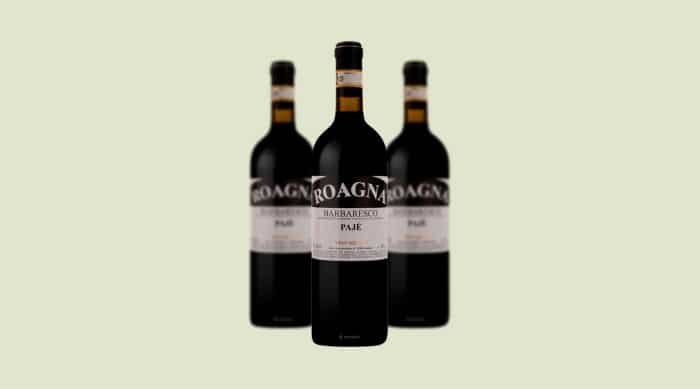
Made in the Paje vineyard of the Roagna estate, the 2006 Crichet Paje is a delicate and structured wine.
The wine enthusiast in you will love the incense, iron, smoke, autumn leaves, cool raspberry and other red fruit, and savory notes.
Price of 2006 Roagna Crichet Paje, Barbaresco DOCG: $1139+
Fun facts about the Roagna winery:
- The word “Crichet” means “top of a hill”, and it comes from the Piemontese dialect.
- The youngest vines used to create this wine are over 60 years old. All vines are regenerated using clippings from other vines in the same area or are propagated by using ungrafted vines.
- The production is very small - less than 2000 bottles a year. The larger size bottles (magnum, double magnum, 5 liters) are even rarer.
5. 2010 La Spinetta Vursu Vigneto Starderi, Barbaresco DOCG
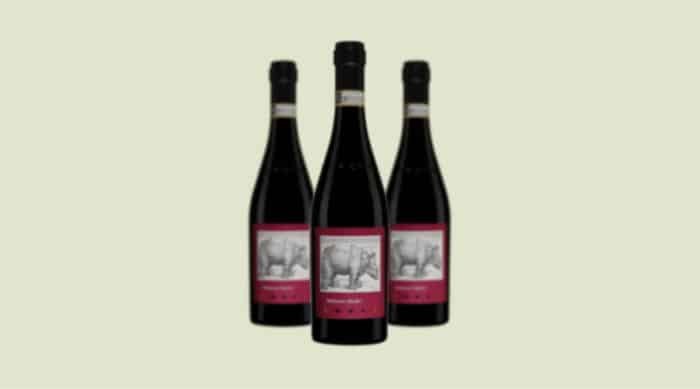
The La Spinetta Vursu Vigneto Starderi is produced by winemaker Giorgio Rivetti using grapes from the younger Nebbiolo vines in the Starderi vineyard.
The 2010 vintage is precise and sharp with tones of spice, dark berry and wet earth. The overall structure is elegant, and you can enjoy a glass of it until 2035.
Price of 2010 La Spinetta Vursu Vigneto Starderi, Barbaresco DOCG: $110+
Fun facts about the La Spinetta winery:
- The winery was founded in 1977, and was first known for their Moscato d’Asti wines. Barbera and Nebbiolo reds were introduced much later.
- They use only natural fertilizers, and horses are used in plowing, with only a bare minimum usage of machinery.
- 75% of the vineyards are farmed biodynamically, and the grapes are hand-picked.
6. 2016 Pio Cesare Barbaresco DOCG
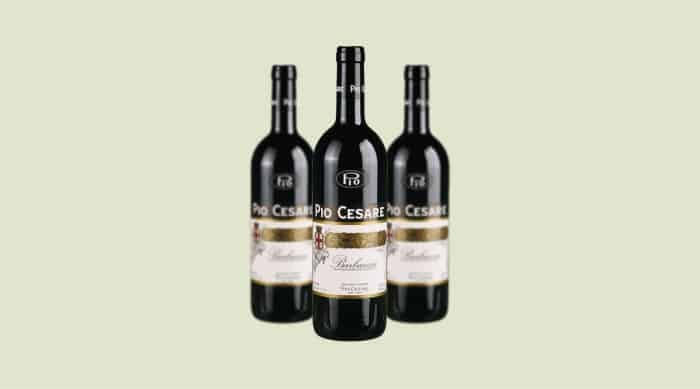
The winemaker Pio Cesare used Nebbiolos from its family-owned vineyards in Treiso and San Rocco Seno d’Elvio.
This is a classic Barbaresco, elegant and velvety, with notes of ripe and spicy fruit, blue flowers, crushed stone, and white licorice.
Price of 2016 Pio Cesare Barbaresco DOCG: $57+
Fun facts about the Pio Cesare winery:
- The winery was founded by Cesare Pio in 1881. It is one of the oldest in the Piedmont region and one of the first to export wines.
- Their cellar is situated in the heart of Alba. Its walls date back to the Roman era.
- Besides the reds, they also make white wines, including Gavi (from the Cortese grape) and Chardonnay Piodilei.
7. 2014 Ceretto Bricco Asili
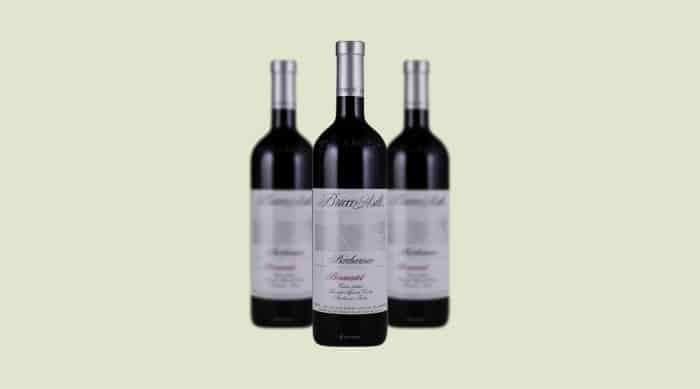
The Ceretto Bricco Asili is made in the Bricco Asili estate, where the grapes have been vinified separately as a single parcel since the early 1970s.
This vibrant, velvety, and taut Barbaresco has bright red cherry fruit, licorice, and floral overtones. It packs a serious punch with its bright acidity and can be cellared until 2041.
Price of 2014 Ceretto Bricco Asili: $120+Fun facts about the Ceretto winery:
- The winery was founded by Riccardo Ceretto in 1937, and is now managed by his sons, Bruno and Marcello.
- Ceretto owns 160 hectares of vineyards and four wineries in the Piedmont region.
- Apart from Nebbiolo, Ceretto also makes wines from Arneis, Dolcetto, Moscato, and Barbera.
8. 2013 Albino Rocca Ovello Vigna Loreto, Barbaresco

The garnet red 2013 Ovello is created in the Albino Rocca estate using grapes from Barbaresco’s largest cru - Ovello.
It has a delicious velvety texture with flavors of black cherry, vanilla, star anise, and a hint of toast. Drink it until 2025.Price of 2013 Albino Rocca Ovello Vigna Loreto, Barbaresco: $60+Fun facts about the Albino Rocca winery:
- Before the winery was opened, the founder (Albino Rocca’s father Giacomo) cultivated grapes in his vineyard. He later made wines and sold them in demijohn.
- 1971 was their first vintage of Barbaresco.
- Apart from Barbaresco, the winery also makes wines from other appellations in the region, including Dolcetto d'Alba, Barbera d'Alba, and Moscato d'Asti.
9. 2016 Poderi Oddero Gallina, Barbaresco DOCG
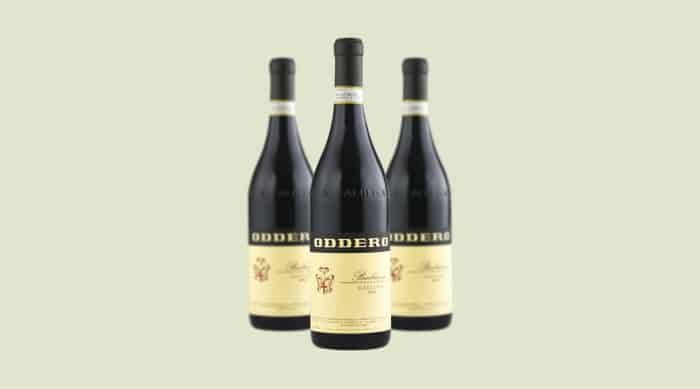
The 2016 Poderi Oddero Gallina is made in the Gallina vineyard in Neive. The winemakers harvested this vintage earlier than their peers, making this wine elegant with distinctive mineral tones.
It has chewy tannins, a sweet cherry nose and gives off notes of dust, chalk, salty minerals, and flowers.
Price of 2016 Poderi Oddero Gallina, Barbaresco DOCG: $54+
Fun facts about the Oddero winery:
- Giovanni Battista Oddero started vinifying grapes in La Morra township in the late 18th century.
- His grandson, Giacomo Oddero, renovated the ancient farm in the 1950s, and took on the task of elevating the prestige of the wines in the entire province of Cuneo.
- His legacy is carried on today by his daughter Mariacristina, and grandchildren Isabella and Pietro - the seventh generation of the family.
How to Buy Barbaresco Wines
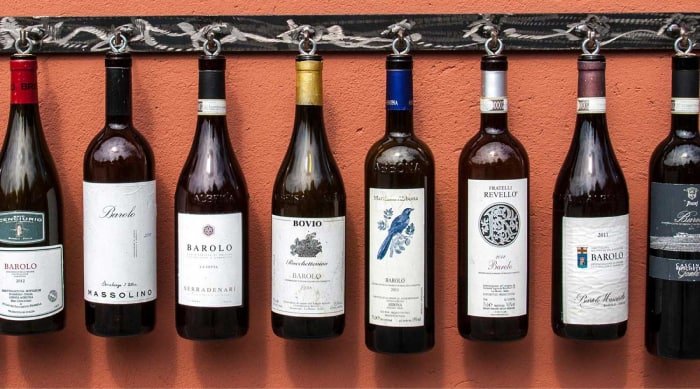
You may get Barbaresco wines from some of the boutique wine stores in your area, global wine exchanges, or an online or in-person wine auction.
If you’re visiting the region, don’t miss visiting some of the wineries to pick up a bottle or two yourself
However, in most of these cases, you’ll never be sure you’re getting your bottle at the best price or whether you’re buying an original bottle and not a fake one! You’ll also have to pay high fees to middlemen and brokers.
What’s more? Once you have it delivered to your home, you’ll have to ensure perfect storage conditions to not ruin its taste or value over time.
Here’s a far easier alternative:
Buy the Best Barbaresco Wines Through Vinovest (for Drinking and Investing)
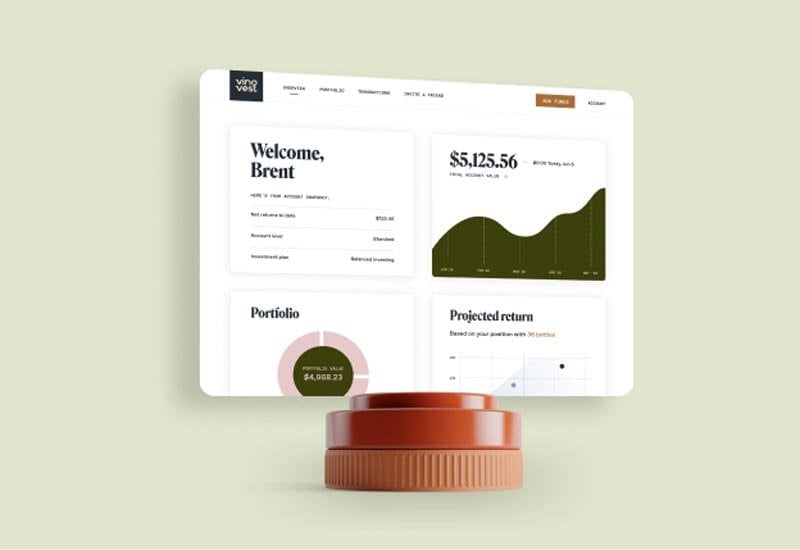
Vinovest is a world-class wine investment company that lets you buy the finest Barbarescos and other wines from Piedmont, French wine regions, or anywhere else in the world - in a hassle-free manner.
Vinovest will also
- Store your Langhe Nebbiolo, Asti Spumante Wines, or Montrachet wine bottles safely
- Sell them when the time is right, and even
Deliver them to you when you wish to pop open your bottle of Italian wine.
How to invest in wines through Vinovest
It’s incredibly simple. Just follow these five steps:
- Sign up
- Answer a brief questionnaire on your risk appetite and investment preferences.
- Add a minimum of $1,000 to your account.
- Select your wines from those suggested by the algorithm.
- Track your portfolio online, and watch it grow over time!
Why should you buy Barbarescos and other wines through Vinovest?
Here are the key benefits:
1. Easy buying
You can easily buy wines from Italy, France or any other part of the world using Vinovest’s intelligent Artificial Intelligence (AI)-driven online platform.
2. Best Wholesale Prices
Vinovest buys wines directly from wineries, wine exchanges, and wine merchants. So, you can be confident that you’ll get your Barbarescos at the best possible wholesale prices.
3. Checking provenance and authenticity
Counterfeit wines and wine fraud are rather common these days. But you don’t have to worry about that anymore. Vinovest will carefully authenticate your Barbarescos and trace their provenance before you buy them.
4. Portfolio curated by wine experts
Through Vinovest, you can build a high-performing investment portfolio of wines carefully curated by an Advanced Sommelier, three Master Sommeliers, and a team of data scientists.
5. Storage under optimal conditions
Vinovest will store your bottles under optimal conditions in bonded warehouses.
6. Insurance
Vinovest is insured with an FDIC equivalent for wine. This protects each bottle against breakage and loss.
7. Low overall costs
Fund your account with a minimum of $1000, and pay a 2.5% annual fee (1.9% for a portfolio over $50,000). This will cover buying your wines, authenticating them, storage, a full insurance policy at market value, managing your portfolio, and selling your wine.
You’ll also enjoy tax advantages because bonded warehouses don’t charge excise duty or VAT.
8. Full ownership
You get full ownership of each wine bottle you buy through Vinovest.
9. Easy selling of wines
The wine experts at Vinovest will help you easily sell your wines if you wish to turn a profit.
10. Easy delivery
In case you wish to drink your wines, Vinovest will have them delivered to your doorstep in time for your special celebration. If you sell your wine bottle, Vinovest will have the bottle shipped to your buyer.Way simpler than selecting, buying, storing, and selling Barbarescos yourself, right?
To Conclude:
Barbarescos may not have been as renowned as its more famous neighbor, Barolo - but no longer. With delicious flavor profiles and age-worthiness, they’ll make a great addition to your wine collection. But, you definitely don’t want to pour over wine reviews and price sites yourself, authenticate the bottles, or pay high brokerage fees and prices to buy the best Barbarescos. Vinovest makes it hassle-free for you to buy or invest in authentic Barbaresco wine bottles and other fine wines from anywhere in the world.So, why not sign up now and start building your wine portfolio right away?



